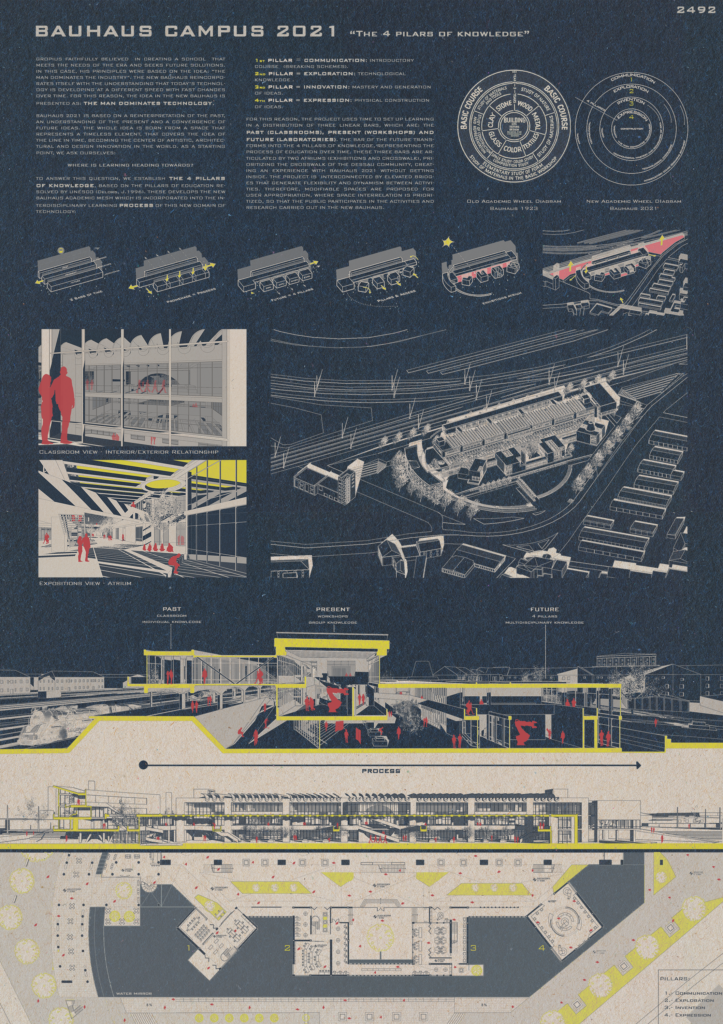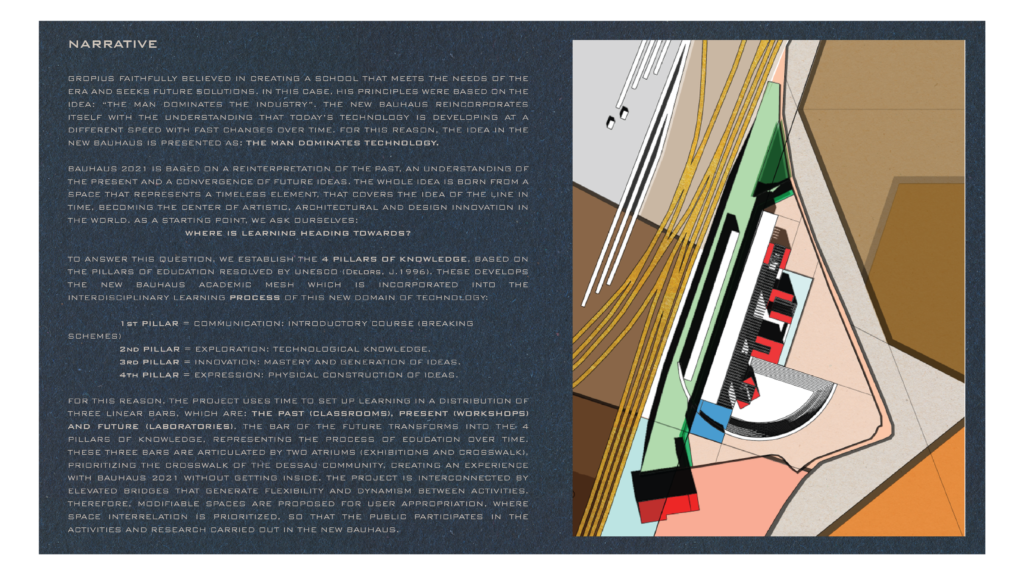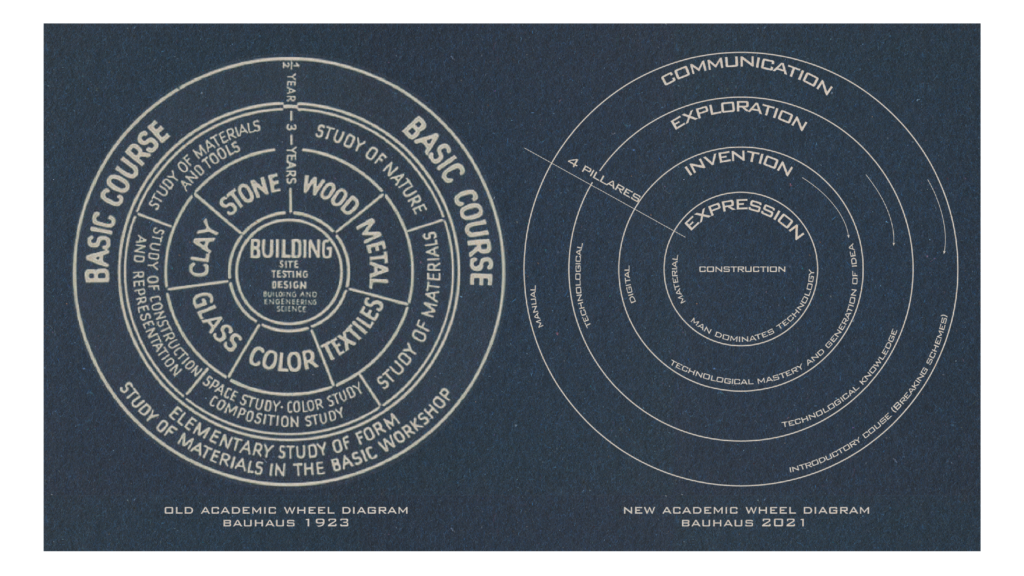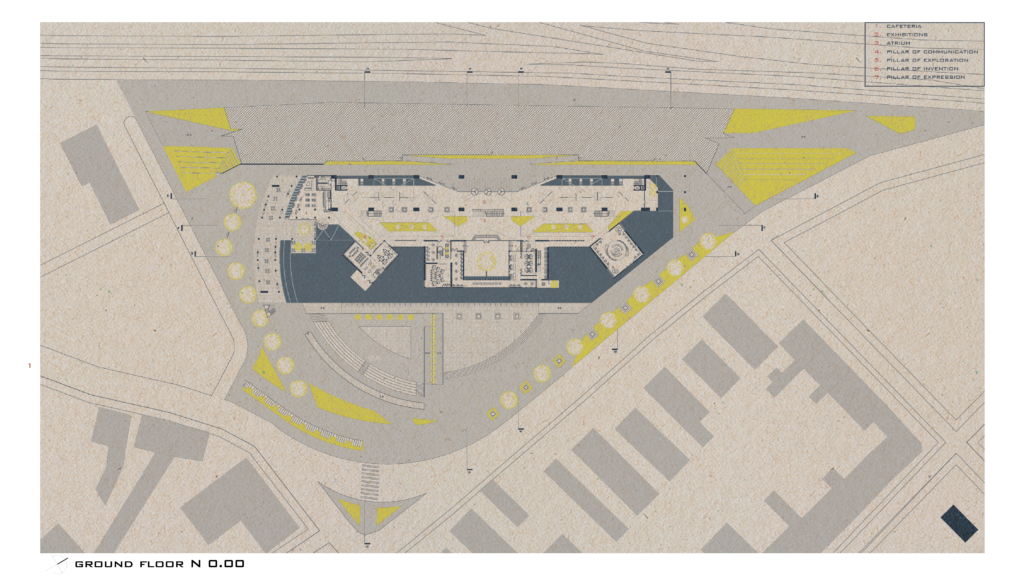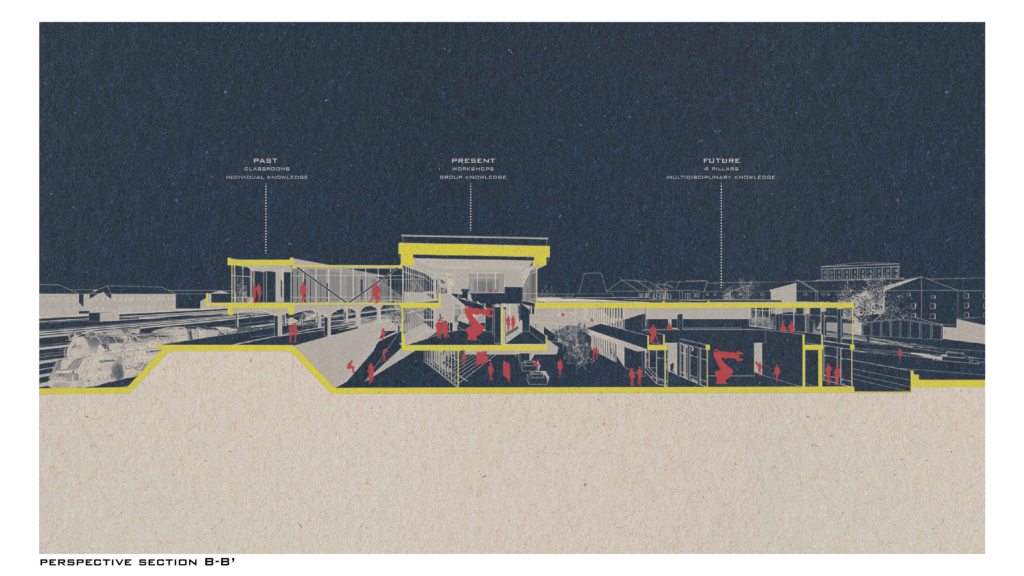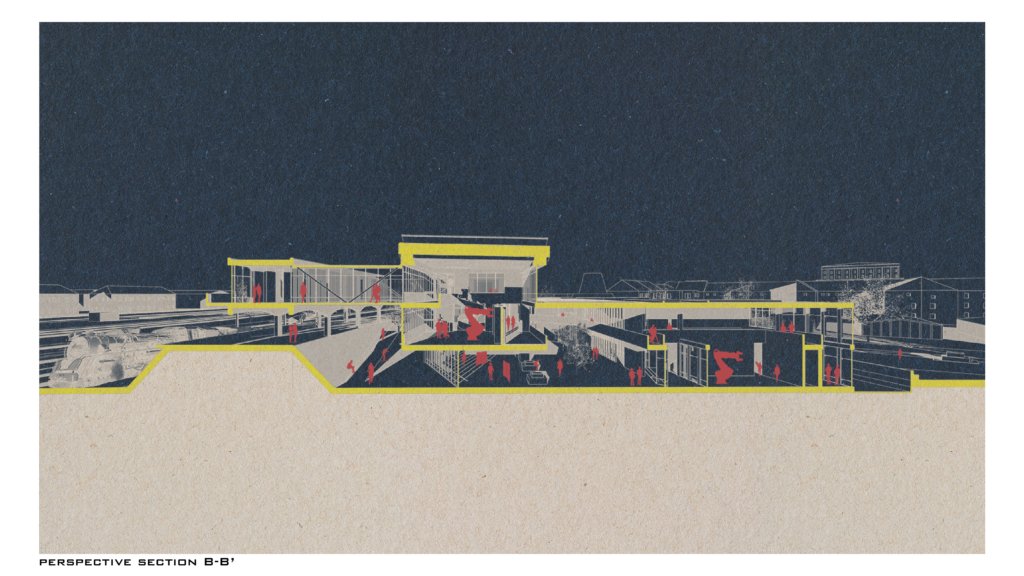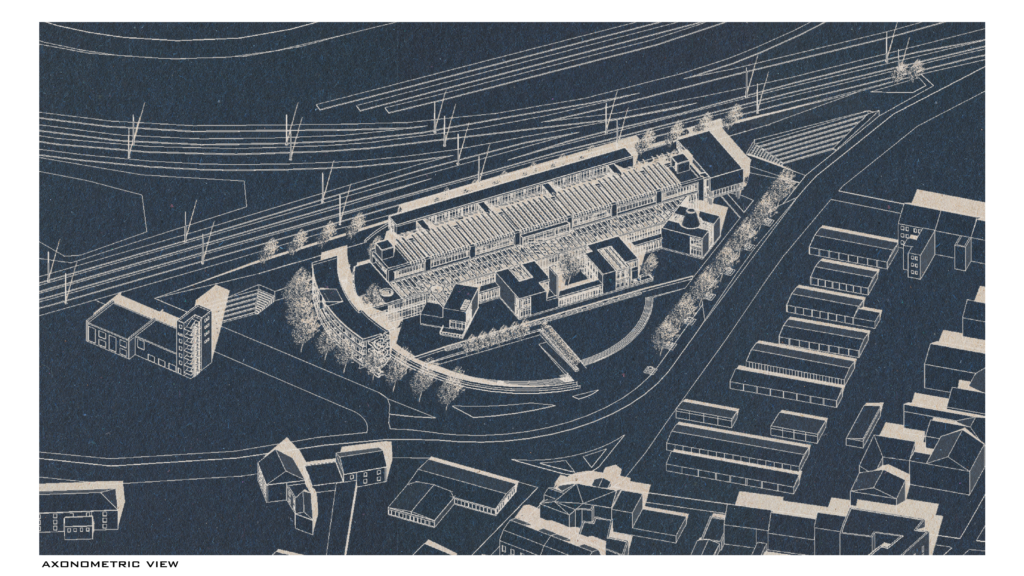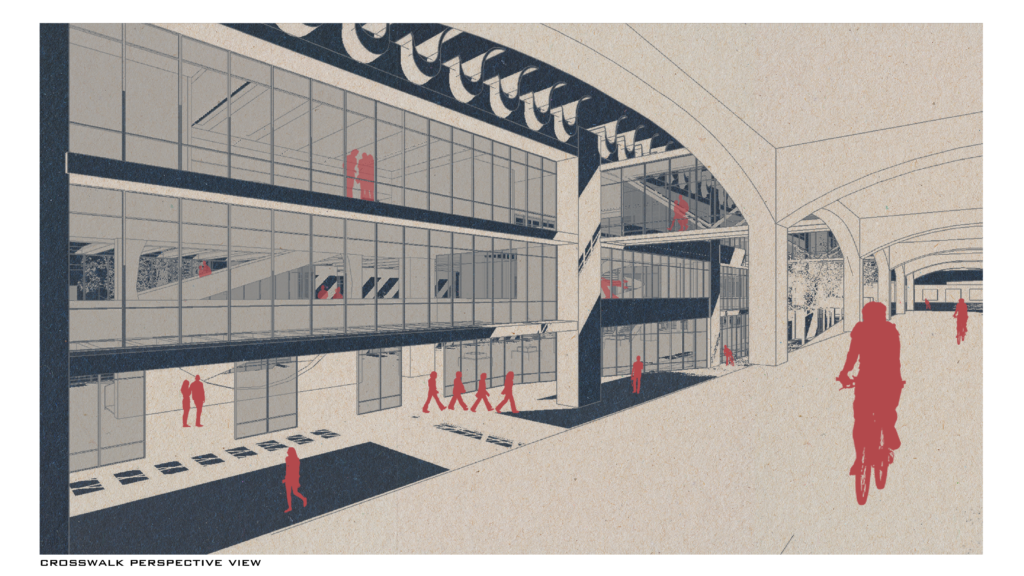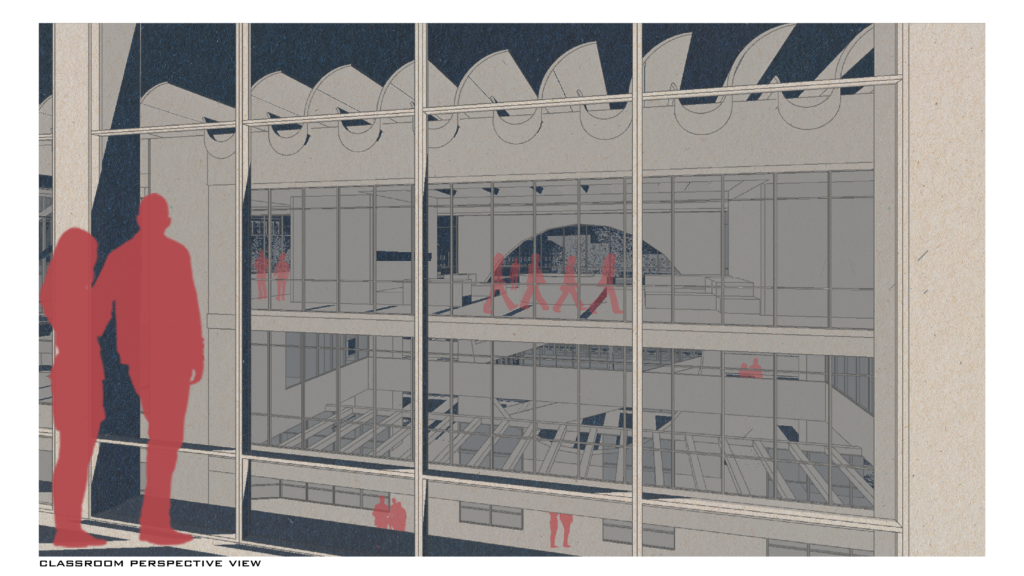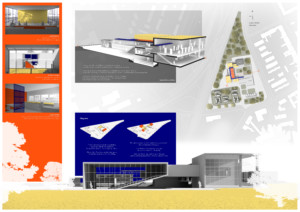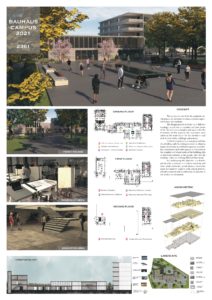BAUHAUS 2021 “The 4 Pillars of Knowledge”
Gropius faithfully believed in creating a school that meets the needs of the era and seeks future solutions. In this case, his principles were based on the idea: “The Man Dominates the Industry”. The New Bauhaus reincorporates itself with the understanding that today’s technology is developing at a different speed with fast changes over time. For this reason, the idea in The New Bauhaus is presented as: The Man Dominates Technology.
Bauhaus 2021 is based on a reinterpretation of the past, an understanding of the present and a convergence of future ideas. The whole idea is born from a space that represents a timeless element, that covers the idea of the line in time, becoming the center of artistic, architectural and design innovation in the world. As a starting point, we ask ourselves:
Where is learning heading towards?
To answer this question, we establish the 4 Pillars of Knowledge, based on the pillars of education resolved by UNESCO (Delors, J.1996). These develops the New Bauhaus academic mesh which is incorporated into the interdisciplinary learning process of this new domain of technology:
1st pillar = Communication: Introductory course (breaking schemes).
2nd pillar = Exploration: Technological knowledge.
3rd pillar = Innovation: Mastery and generation of ideas.
4th pillar = Expression: Physical construction of ideas.
For this reason, the project uses time to set up learning in a distribution of three linear bars, which are: The Past (classrooms), Present (workshops) and Future (laboratories). The bar of the future transforms into the 4 pillars of knowledge, representing the process of education over time. These three bars are articulated by two atriums (exhibitions and crosswalk), prioritizing the crosswalk of the Dessau community, creating an experience with Bauhaus 2021 without getting inside. The project is interconnected by elevated bridges that generate flexibility and dynamism between activities. Therefore, modifiable spaces are proposed for user appropriation, where space interrelation is prioritized, so that the public participates in the activities and research carried out in The New Bauhaus.
Old Academic Wheel Diagram – Bauhaus 1923
New Academic Wheel Diagram – Bauhaus 2021
Classroom view – Interior/Exterior relationship
Exhibition view – Atrium
Past = Classroom – Individual knowledge
Present = Workshops – Group knowledge
Future = 4 Pillars – Multidisciplinary knowledge
PROCESS
PILLARS
- Communication
- Exploration
- Innovation
- Expression
